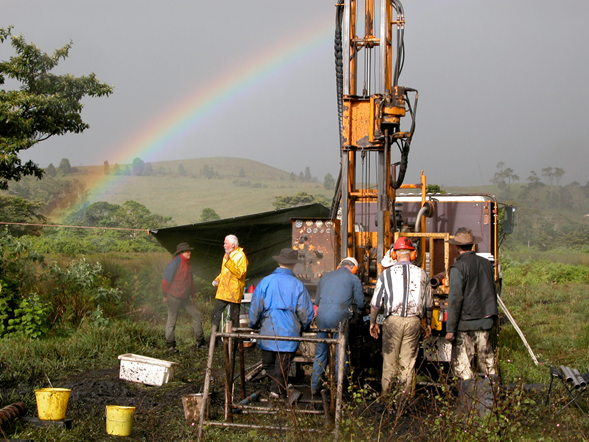
ESSRC researchers are to play a leading role in the new ARC Centre of Excellence for Australian Biodiversity and Heritage.
Australia’s distinctive character is captured in its unique natural and human history. Yet much of this story remains unknown. How did Indigenous Australians and our endemic fauna and flora respond and adapt to periods of climatic stress, and what lessons can be learnt that will help our environment and society in the future?
The new seven-year Australian Research Council (ARC) Centre of Excellence for Australian Biodiversity and Heritage (CABAH) will be headquartered at the University of Wollongong and led by Distinguished Professor Richard (Bert) Roberts, an ARC Laureate Fellow and Director of UOW’s Centre for Archaeological Science. ESSRC members Professor Chris Turney and Associate-Professor Darren Curnoe will play a leading role in the large international research team as they begin their seven-year, $45.7 million quest to shed light on Australia’s iconic biodiversity and Indigenous heritage.
This will be the first continental-scale project of its kind in the world: CABAH will pioneer a new understanding of the natural and human history of Australia, Papua New Guinea and eastern Indonesia from 130,000 years ago until European arrival.
Professor Turney said Australia’s past is key to understanding the future: ‘Australia celebrates an extraordinarily unique flora and fauna that has experienced a dizzying range of climate and environmental extremes in the recent geological past. And being home to Indigenous peoples for tens of millennia we will be working with communities to better understand the impacts and adaptations to these extremes. It’s incredibly important we get a better handle on just how past changes have impacted Australia. This is work you just can’t do anywhere else in the world.’
Understanding how and when people arrived in Australia will form a major focus in the new Centre. Led by Associate Professor Curnoe: ‘Australia was one of the first places outside of Africa to be settled by modern humans. Yet this incredible episode in our global history as a species remains a mystery. We’re going to explore, in a unique way, wide ranging perspectives on this great journey, including those of Australia’s Indigenous people themselves.'
CABAH will take an innovative, transdisciplinary approach, bringing world-leading researchers from science, technology, engineering and mathematics disciplines (spanning the natural sciences) together with scholars from the humanities and social sciences, such as archaeology and Indigenous studies. Communicating the scientific method and the excitement of discovery will be a major focus for the team, critical for arresting the national decline in the number of students taking Science, Technology, Engineering and Mathematics (the so-called STEM disciplines) at high school and higher education.
If you would like to learn more about the ARC Centre of Excellence for Australian Biodiversity and Heritage (CABAH) including opportunities to join the new team, please visit https://cabah.org/.
